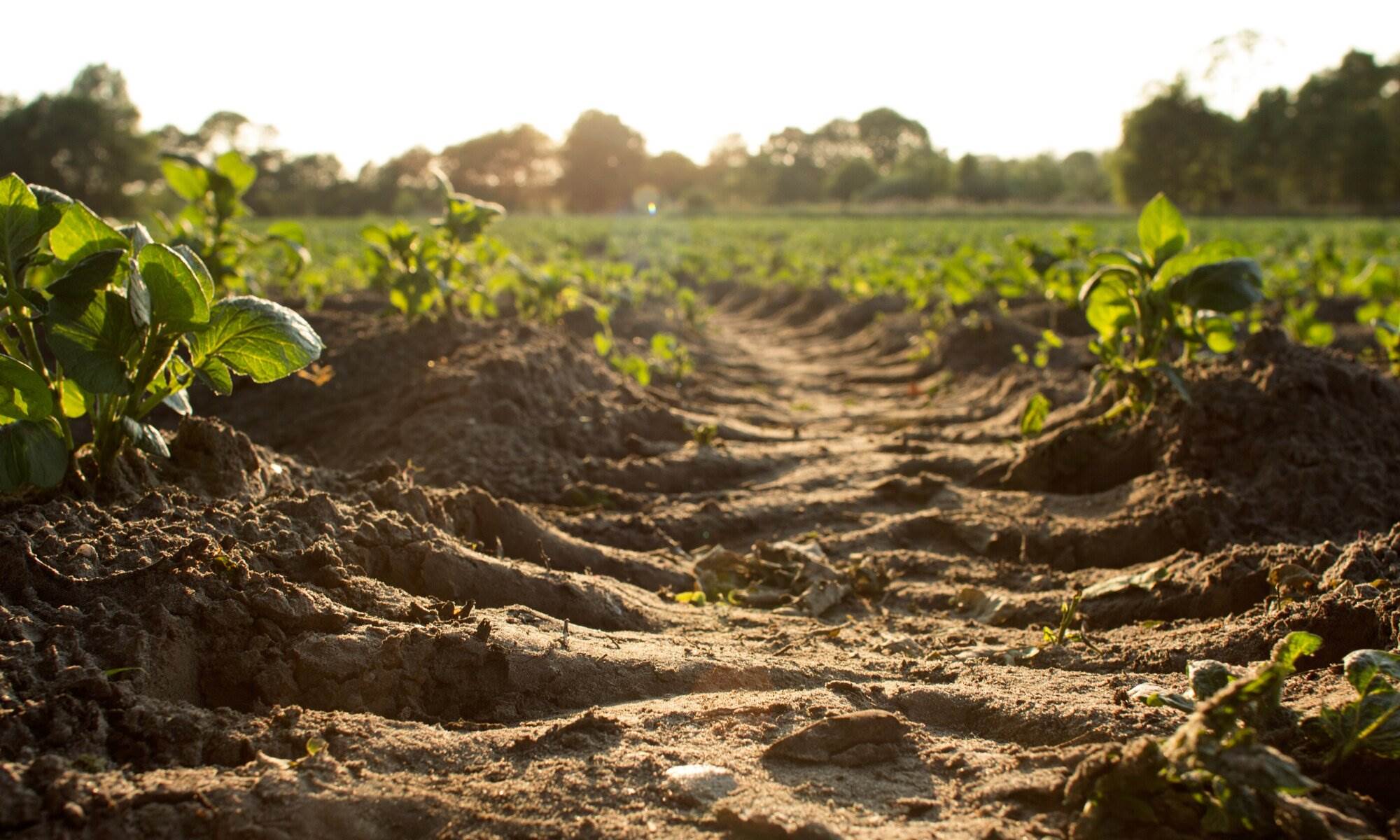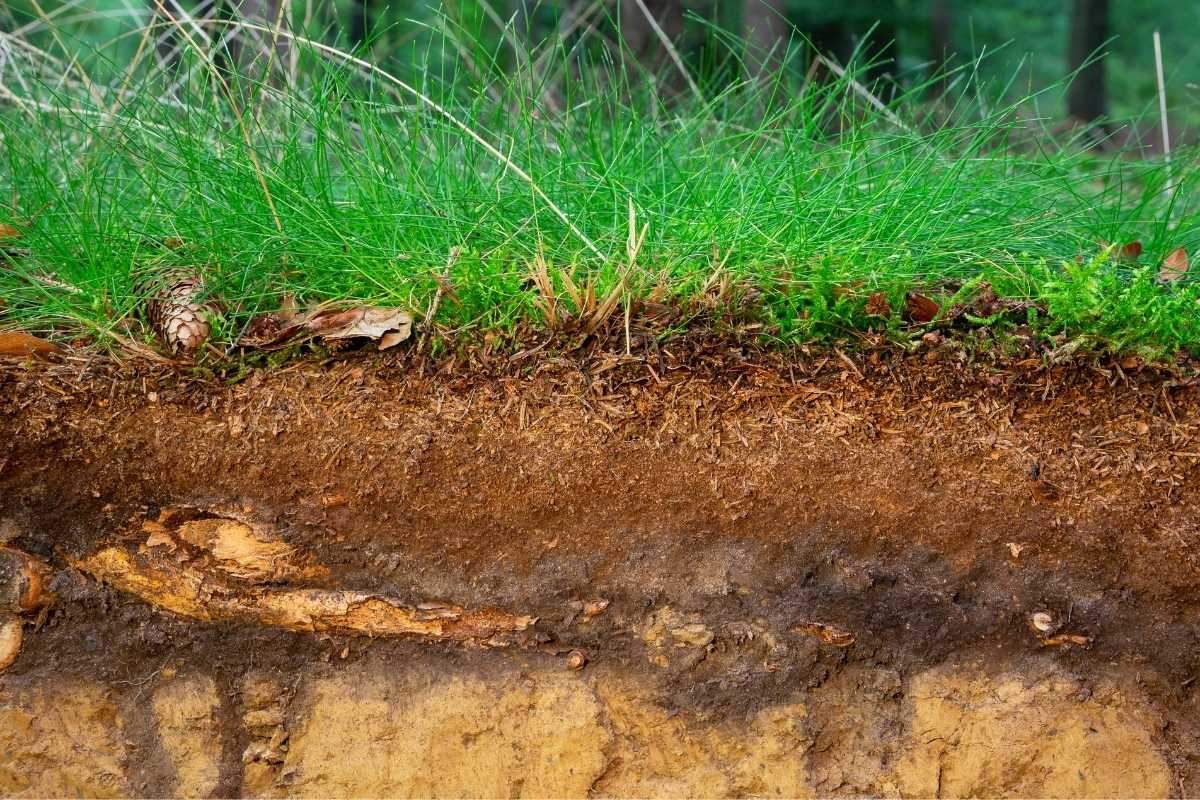Home>Gardening Basics>Understanding Soil>Which Soil Horizon Is The Most Important To Farmers For Planting Crops?


Understanding Soil
Which Soil Horizon Is The Most Important To Farmers For Planting Crops?
Modified: February 10, 2024
Gain a deeper understanding of soil and discover which soil horizon holds the most significance for farmers when it comes to successful crop cultivation.
(Many of the links in this article redirect to a specific reviewed product. Your purchase of these products through affiliate links helps to generate commission for Chicagolandgardening.com, at no extra cost. Learn more)
Table of Contents
Introduction
Soil is a vital natural resource for farmers, serving as the foundation for successful crop production. Understanding the different layers of soil, known as soil horizons, is crucial for farmers when it comes to planting crops and optimizing their yield. Each soil horizon has unique characteristics that impact nutrient availability, water retention, and overall soil health.
In this article, we will explore the importance of soil horizons for farmers and delve into which specific soil horizon is the most crucial for successful crop planting. By understanding this key aspect of soil science, farmers can make informed decisions regarding soil management practices that are essential for sustainable agriculture.
Before we dive into the significance of soil horizons for farmers, let’s briefly discuss what soil horizons are and how they are formed. Soil is typically composed of several layers, or horizons, with each horizon exhibiting distinct properties based on factors such as weathering, organic matter content, and mineral composition.
Soil Horizons and their Importance
Soil horizons are the different layers that make up the soil profile. They are classified based on their composition, structure, color, and other physical and chemical properties. The soil profile typically consists of three main horizons: the topsoil (A horizon), the subsoil (B horizon), and the parent material (C horizon).
Each soil horizon plays a crucial role in determining the soil’s fertility, water-holding capacity, and overall suitability for plant growth. The topsoil, or A horizon, is the most important horizon for farmers. It is rich in organic matter, nutrients, and microorganisms, making it an ideal medium for root development and nutrient uptake by plants.
The subsoil, or B horizon, lies beneath the topsoil and is characterized by a lower organic matter content and a higher concentration of minerals. It acts as a reservoir for water, allowing plants to access moisture during dry periods. The B horizon also serves as a conduit for the movement of nutrients from the topsoil to the roots.
The parent material, or C horizon, is the lowest layer of the soil profile. It consists of weathered rock or unconsolidated material and has a minimal influence on plant growth directly. However, the parent material can indirectly affect crop productivity by influencing factors such as soil drainage and nutrient availability.
Understanding the properties and importance of each soil horizon is crucial for farmers. It allows them to assess the fertility of their soil, identify any limitations or deficiencies, and implement appropriate management practices to optimize crop production. By maintaining a healthy balance of nutrients, water, and organic matter in each horizon, farmers can maximize their yields and ensure sustainable agricultural practices.
Importance of Soil Horizon for Crop Planting
The soil horizon that holds the greatest importance for crop planting is the topsoil, or the A horizon. This layer is crucial for successful crop growth because of its rich composition and unique characteristics.
The topsoil contains a high concentration of organic matter, such as decomposed plants and animals, which provide essential nutrients to plants. It also harbors a diverse community of microorganisms, including bacteria and fungi, that play a vital role in nutrient cycling and soil health.
This layer is essential for crop planting due to several reasons. Firstly, the topsoil acts as a reservoir for nutrients that can be absorbed by plant roots. Nutrients like nitrogen, phosphorus, and potassium are crucial for plant growth, and their availability in the topsoil ensures optimal plant development.
Secondly, the topsoil has excellent water-holding capacity, allowing it to retain moisture for extended periods. This is especially important in regions with limited rainfall or during drought conditions. The ability to hold water ensures that crops have access to a sufficient supply, preventing water stress and promoting healthy growth.
Thirdly, the topsoil possesses a loose structure, making it conducive to root penetration and growth. Strong and well-developed root systems are essential for water and nutrient absorption, as well as anchoring plants in the ground. The topsoil’s favorable structure also aids in the aeration and circulation of gases, promoting healthy root respiration.
Farmers must prioritize the maintenance and enhancement of the topsoil when planning crop planting. Implementing good soil management practices, such as organic matter additions, cover cropping, and crop rotation, can help preserve the integrity and fertility of the topsoil.
Additionally, farmers can conduct regular soil testing to assess nutrient levels and pH in the topsoil. This information guides them in making informed decisions regarding fertilization and pH adjustment, ensuring that crops receive adequate nutrition for optimal growth and productivity.
Soil Horizon Characteristics and Crop Growth
The characteristics of each soil horizon directly influence crop growth and productivity. Understanding these characteristics allows farmers to tailor their agricultural practices to maximize the potential of their soil.
Firstly, the topsoil, or A horizon, is rich in organic matter and nutrients, providing an ideal environment for plant roots. The presence of organic matter improves soil structure, promotes water infiltration, and enhances nutrient-holding capacity. These factors are crucial for supporting vigorous plant growth and high crop yields.
The texture of the topsoil also plays a significant role in crop growth. Loam soils, which have a balanced mixture of sand, silt, and clay particles, are considered ideal for agriculture. Loam soils have good water-holding capacity, proper drainage, and provide aeration to the roots, leading to optimized crop development.
The subsoil, or B horizon, has different characteristics that impact crop growth. While it may contain fewer organic matter and nutrients compared to the topsoil, the subsoil can contribute to plant growth through its water-holding capacity and nutrient availability. Deep-rooted crops can benefit from the subsoil’s ability to store water during dry periods, mitigating the effects of drought stress.
The structure of the subsoil is also important for crop growth. Well-drained subsoil with good porosity allows for proper root development and prevents waterlogging, reducing the risk of root diseases and improving nutrient uptake efficiency.
The parent material, or C horizon, has a relatively minimal direct impact on crop growth. However, its characteristics indirectly influence crop productivity. For example, parent material composed of clay particles can lead to compacted soils with poor drainage, affecting root growth and nutrient availability. Additionally, the mineral composition of the parent material can influence soil pH, which in turn affects nutrient availability for plants.
Understanding the specific characteristics of each soil horizon allows farmers to implement targeted soil management strategies. For instance, adding organic matter to the topsoil can improve its nutrient content and water-holding capacity. Installing drainage systems can enhance subsoil characteristics, ensuring adequate aeration and proper water movement within the soil profile.
By recognizing the interplay between soil horizon characteristics and crop growth, farmers can make informed decisions regarding soil amendments, irrigation practices, and crop selection. This knowledge empowers them to optimize both soil health and crop productivity.
Factors Influencing Soil Horizon Importance for Farmers
Several factors come into play when determining the importance of each soil horizon for farmers. These factors can vary based on geographical location, climate, farming practices, and specific crop requirements.
One key factor is the type of crop being grown. Different crops have varying nutrient requirements, rooting depths, and tolerance to specific soil conditions. For instance, shallow-rooted crops may rely heavily on the topsoil for nutrient uptake, while deep-rooted crops may be more dependent on the subsoil for water access during dry periods.
The local climate also influences the importance of each soil horizon. In arid regions with limited rainfall, the ability of the topsoil to retain moisture becomes crucial. On the other hand, in regions with high rainfall, the subsoil’s drainage capabilities are vital for preventing waterlogging and ensuring adequate oxygen supply to the roots.
Farming practices also impact the importance of soil horizons. Intensive agricultural practices, such as frequent tillage or heavy fertilizer use, can accelerate the depletion of nutrients and organic matter in the topsoil. This increases the significance of implementing soil conservation practices, such as cover cropping and crop rotation, to maintain soil fertility and health.
The presence of soil erosion or compaction can also affect the relative importance of soil horizons. In areas with significant erosion, the loss of topsoil can impact crop productivity and increase the significance of subsoil characteristics for plant growth. Similarly, in areas with soil compaction, the subsoil’s ability to provide proper drainage and root penetration becomes essential for crop success.
Additionally, the availability of resources and technologies for soil management can influence the importance of each horizon. Access to irrigation systems, precision agriculture techniques, and soil testing services can help farmers optimize the fertility and health of their soil, regardless of the specific soil horizon they are working with.
In summary, several factors, including crop type, climate, farming practices, soil erosion, and resource availability, influence the relative importance of each soil horizon for farmers. Understanding and considering these factors is crucial for farmers to make informed decisions regarding soil management practices and maximize crop production.
Conclusion
The knowledge of soil horizons and their importance for farmers is essential for successful crop planting and sustainable agriculture. Among the different soil horizons, the topsoil, or A horizon, holds the greatest significance for farmers. It is rich in organic matter, nutrients, and microorganisms, providing a fertile medium for root development and nutrient uptake by plants.
While the topsoil is crucial, the subsoil (B horizon) and parent material (C horizon) also play important roles in crop growth. The subsoil acts as a reservoir for water and nutrients, supporting plant development during dry periods. The parent material indirectly influences factors such as soil drainage and nutrient availability.
Factors such as crop type, climate, farming practices, erosion, and resource availability impact the relative importance of each soil horizon. Understanding these factors allows farmers to make informed decisions regarding soil management practices that optimize soil fertility, water availability, and nutrient content.
To maintain the health and productivity of their soil, farmers can implement various practices such as adding organic matter, managing soil erosion, improving drainage, and conducting regular soil testing. These actions contribute to sustainable agriculture and ensure the long-term viability of crop production.
In conclusion, the knowledge of soil horizons and their importance empowers farmers to make informed decisions regarding soil management practices. By prioritizing the health and fertility of the topsoil, considering the characteristics of the subsoil, and understanding the influence of the parent material, farmers can optimize their crop planting and promote sustainable agriculture for future generations.







